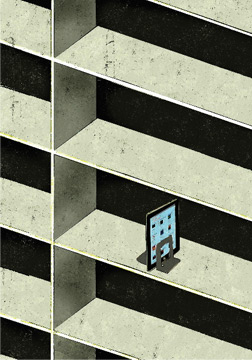If digital is the way of the future for (most) books, your bookshelves, or those of your children will start to look extremely barren — and the thought of this potentially happening in my lifetime gives me pause.

As much as I’m in favour of worthwhile new technology, the designer and anthropologist in me desperately does not want to see the physical object — the “artifact” — go the way of the dodo.
High Fidelity
Contrary to the music industry where fidelity has started decreasing — from CDs to MP3 and M4A audio formats, digital books are moving in the opposite direction and becoming higher resolution than their paper counterparts. Text on paper doesn’t scale well, but digital text does.
An important counterpoint though is the issue of photos and illustrations in books — those things will likely go the low-resolution route in the short-term.
Dots on paper require high resolution to output any semblance of quality. Pixels can be a bit more forgiving, though that is less true as displays increase in resolution and artifacts begin to become more apparent. Early HD television is a good example of this occurrence.
As technology and publishers’ familiarity with electronic format options improves, along with a bit of experimentation, this will likely change. There’s a lot of promise in digital books, but they should be handled properly now to avoid bad precedents leading the way. For example, as Wired magazine is (hopefully) learning right now, a digital publication made up entirely of JPEG images will not fly. I’m willing to give them a pass on the first attempt — because at least they’re trying something — but it’s not a viable long-term strategy.
Illustration by Brian Stauffer, from The Atlantic Monthly - April 2010